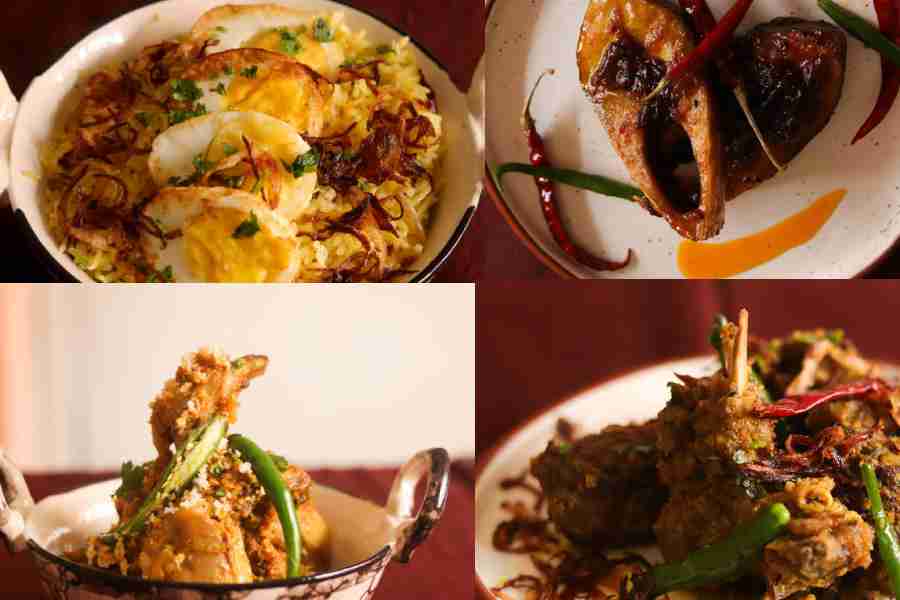Lockdown blues and an insatiable craving for home-cooked yet delectable meals during the early days of the lockdown led to the birth of cloud kitchen Goppoburir Henshel. Run by friends Arijit, Arnab and Sanhita, their creations are based on recipes that have been handed down the generations through a process of oral narration and storytelling, hence the name.
The friends curate recipes that have a story to tell, either based on festivals, folklore or the experiences of daily life. Their kitchen is an amalgamation of forgotten recipes from the cookbooks of their grandmothers’ kitchens, which are simple, yet delicious and unique. Minimal ingredients and simple cooking techniques coupled with taste and fragrance are what their signature recipes are all about.
Some popular dishes from Goppoburir Henshel:
Alu Tilottama: Boiled potatoes with tangy spices served with roasted sesame seeds is a dish which is 100 years old and used as an evening snack. The dish is a predecessor of the modern-day Alu-Kabli.
Narkel Murgi: Coconut in curry is very popular in eastern and southern India. The quintessential Bengali malaikari is derived from the juice of tender coconut. Narkel Murgi is an age-old recipe with a thick gravy made from desiccated coconut and garnished with green chillies, giving it its distinctive fiery-yet- sweet taste.
Deemer Tikli Pulao: A unique pulao made of egg which was one of the items in the elaborate menu card of the wedding of Maharaja Krishnachandra of Nadia. This is a forgotten recipe, where the uniqueness lies in its presentation. The word ‘tikli’ is derived from the egg nodules that give the pulao its unique look and flavour.
Illish Machher Phiringi Jhal: A different spicy, tangy preparation of the queen of fish, hilsa, where onions are added unlike in other preparations. The recipe dates back to the time when the British came to India and settled in Calcutta. They took an interest in the fresh river catch and wanted a flavour which was different from the usual mustard gravy. Hence the cooks added tamarind and other spices which accentuated the taste and was highly savoured by the British officials.
Kalojeere Kanchalonka Mangsho: Inspired by the delicacies of the zamindars of Mymensingh, this dish is a milder version of the spicy mutton curry. It is flavoured with aromatic nigella seeds and green chillies, which give it a light and delicate taste, suitable to the tropical weather of Bengal.
